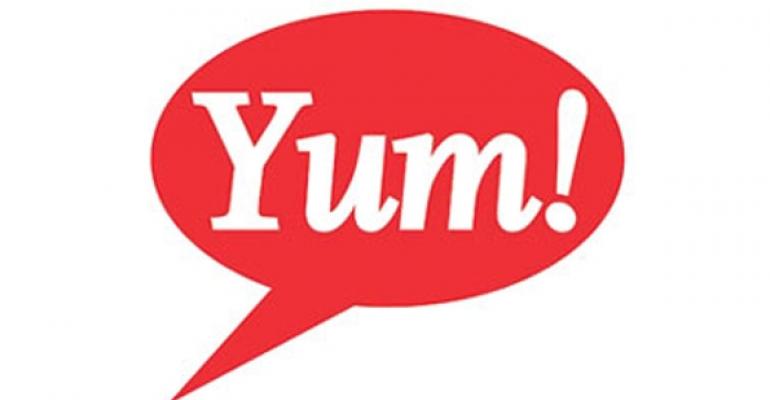Yum! Brands Inc. narrowed its same-store sales decline in its struggling China division in October, reporting a 5-percent decrease for the month.
Same-store sales for the Louisville, Ky.-based company’s China division dropped 7 percent at KFC, offset by a 10-percent increase at Pizza Hut Casual Dining.
Still, it was the company’s best performance in eight months in China, where negative publicity surrounding the country’s supply of chicken gained traction in December 2012, sending KFC’s sales spiraling downward for all of 2013. Earlier this year, Yum launched a quality assurance marketing campaign in China called Operation Thunder, which appeared to be helping turn sales around until new fears of avian flu in several large Chinese cities derailed the company’s momentum.
RELATED
• Yum: China sales recovery unlikely in 2013
• Yum 3Q profit falls 68%
• More restaurant finance news
While October’s 5-percent same-store sales decline in China was in line with expectations, one analyst says that the improvement doesn't mean the company will recover its once robust trajectory for sales and margin growth any time soon. Yum will likely struggle to improve sales meaningfully in the last two months of the year, even as comparisons to last year’s performance improve, Andy Barish of Jefferies Equity Research wrote in a research note.
Some of Yum’s recent moves in China missed their mark, he added, and the slower growth of China’s economy, as well as intensified competition from other Western and native quick-service brands, make Yum’s once-projected strong recovery in 2014 less likely.
“Given that KFC trends first appeared to turn negative last October, implying a relatively easy lap, the fact that same-store sales are only ‘less negative’ month-over-month remains discouraging,” Barish wrote.
KFC China launched a new marketing campaign this month, called “I Commit,” he noted, which amplified earlier quality assurance messages with testimonials from KFC employees and suppliers. “But it is unclear if [the campaign] is really resonating with consumers,” Barish wrote.
KFC’s most recent menu introductions did not produce their hoped-for traffic increases, either, Barish added. The Layered Beef Burger drove menu mix in September, but not incremental traffic, he wrote. In October, KFC offered an aggressive value promotion of a “Half Price Bucket” of chicken on the bone, which might have backfired, Barish noted, because negative publicity about the item’s smaller portion sizes likely hurt sales. “We would expect continued innovation in the pipeline, like seasonal-inspired wings, but we do not see any blockbuster product news on the horizon,” Barish wrote.
Barish forecasts a 5-percent decline in Chinese same-store sales for the fourth quarter — which includes September, October, November and December — despite easier comparisons to last year’s sales.
“The company is working hard to turn trends,” Barish wrote, “but given brand, competitive and economic headwinds, we remain concerned that management has little control over the timing and trajectory of the recovery. While Pizza Hut Casual Dining will likely benefit from the continued expansion of breakfast across its system, we see limited sales drivers for KFC.”
Yum’s restaurant-level margins in China might take even longer to return to their former levels, he added, projecting a return to the 18-percent pre-crisis level no sooner than 2015.
Yum has nearly 6,000 restaurants in China. Worldwide, the company has more than 40,000 units of KFC, Taco Bell and Pizza Hut in more than 130 countries.
Contact Mark Brandau at [email protected].
Follow him on Twitter: @Mark_from_NRN





